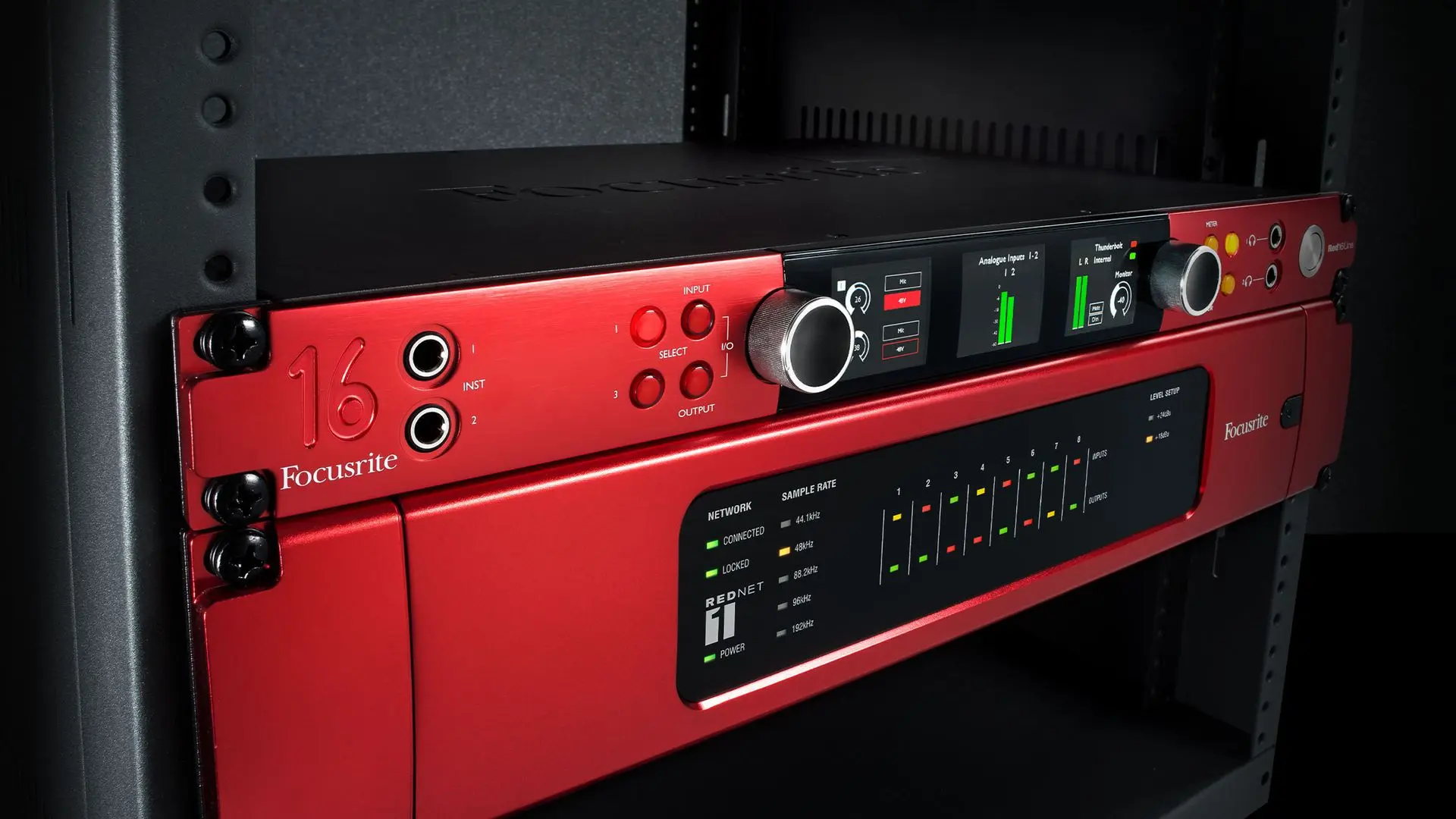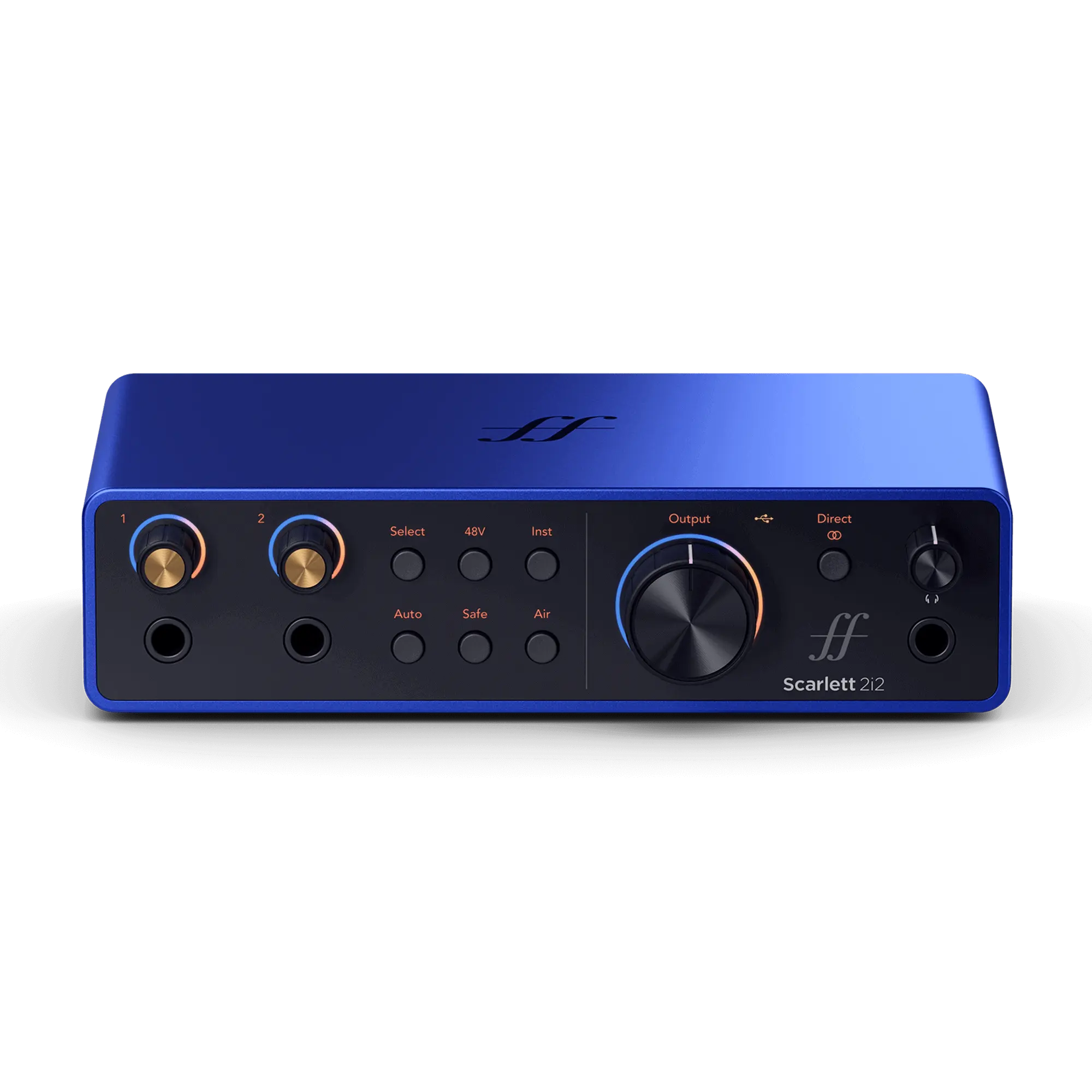Forty years is a long time in the tech world—especially the audio world, where formats, workflows, and entire industries have changed several times over. Yet Focusrite has managed to stay consistent. Not in product types, which have ranged from boutique analog gear to mass-market interfaces, but in the stubborn belief that sound quality actually matters.
It didn’t start with a business plan or a marketing idea. It started with a Preamp.
1985 — It Begins with Sir George Martin
In 1985, Sir George Martin —legendary producer of The Beatles—asked Rupert Neve to build something special for AIR Studios. Not a whole console—just a pair of modules. But they had to be the best mic preamp and EQ money could buy. Neve responded with the ISA 110, built around transformer inputs, huge headroom, and an EQ section that felt musical rather than clinical.
People often talk about the “Focusrite sound.” This is where that came from: a clean, big, effortless clarity that didn’t hype anything but somehow made everything easier to work with.

Focusrite ISA 110 preamp/equalizer modules
1988–1990 — The Forte Console: Great, But Almost Too Great
After the ISA modules caught attention, Focusrite went for something wildly ambitious: a full console. The Forte desk combined ISA 110 Pres, ISA 130 dynamics, and a signal path so clean you could practically fall into it.
The problem? Building it was a nightmare. It was too expensive, too slow to manufacture, and frankly too perfect to survive in a commercial market. Only a few units were ever made. But the mindset behind it—precision over convenience—stuck around and shaped everything that followed.
1993–1999 — The Red and Blue Outboard Era
When console building proved unsustainable, Focusrite did something far more sensible: Outboard gear.
The Red Range (1993)
If you ever walked into a ’90s studio and saw that bright red anodized front panel glowing at you, that was probably a Red Series unit. They took the ISA spirit and modernized it—sleek, punchy, and instantly recognizable. Engineers loved them because they sounded great and looked like they meant business.
The Blue Range (late ’90s)
The Blue Series leaned the other direction: ultra-clean, mastering-oriented, and almost academic in its precision. Some people found them too polite; mastering engineers quietly bought more of them.

Focusrite Liquid Channel
2004–2005 — Stepping into the Digital World
As DAWs took over, Focusrite adapted rather than resisted.
The Liquid Channel (2004)
This one felt like a science experiment that somehow escaped the lab. Using dynamic convolution, it tried to capture the behaviour of classic preamps and compressors. Not an emulation, not exactly modelling—something in between. Whether you loved it or thought it was a bit eccentric, you had to respect the ambition.
Saffire (2005)
FireWire interfaces were everywhere, and Saffire was Focusrite’s first serious entry. It wasn’t flashy, but it hit at the right moment: reliable preamps, stable software, and pricing that didn’t scare home-producers away. If you trace the roots of today’s Scarlett line, this is where the tree starts.
Focusrite Scarlett Interfaces

2011 — A Turning Point
The year 2011 marked a major shift in Focusrite’s trajectory as the company. They Launched two major products that made waves in the audio industry. The Scarlett and Rednet series!
Scarlett didn’t just sell well—it took over. The idea was simple: an interface that beginners could afford, and professionals wouldn’t laugh at. The aluminum red shell helped, but the sound quality is what made people keep buying them. At some point, Scarlett became the “first interface” for a generation of musicians, podcasters, and YouTubers. Ask around today and you’ll still hear, “Yeah, my first interface was a Scarlett.”
Alongside these developments, the company jumped into networked audio with RedNet, based on Dante. This wasn’t a niche experiment—this was a real professional infrastructure play. Suddenly, broadcast rooms, large studios, and installation spaces could run high-quality audio over standard networks. RedNet became the quiet backbone for an incredible number of facilities.

Focusrite Red 16Line and REDNET 3
2012 — Red (Redline) Series
If Saffire planted the seeds for Focusrite’s interface family, the Redline is where those ideas went premium. These units were built for studios that needed serious muscle—fast connectivity, clean conversion, and rock-solid performance. With Thunderbolt and DigiLink options, extremely low latency, and the well-known Red Evolution preamps, the Red range wasn’t trying to be budget-friendly; it was engineered to eliminate anything that could get in the way of the recording process. Features like Air mode, inspired by the classic ISA sound, and Dante support on certain models helped the Red series link Focusrite’s heritage with the needs of today’s hybrid studios.
2015–2021 — Clarett + Scarlett 3rd Gen
Clarett (2015)
Clarett stepped things up: lower latency, extended dynamic range, and preamps that hinted at the ISA lineage without pretending to be replicas. It became the “I’m serious about this” upgrade for small studios, by standing in between the Scarlett and Redline Series.
Scarlett 3rd Gen (2019)
The third generation wasn’t showy, but it was a solid overhaul—better converters, better metering, a more refined Air mode, lower noise, and USB-C. It kept Scarlett competitive at a time when the interface market started filling up with options.

Focusrite Scarlett 4th Gen Interfaces
2024 — Scarlett 4th Generation: The First Big Redesign
Scarlett 4th Gen finally felt like a major step forward:
- Auto Gain
- Clip Safe
- On-unit dynamic metering
- Noticeably better preamps and monitoring
And visually, the whole line looked more grown-up—still red, but cleaner and more purposeful.
2025 — 40th Anniversary and the ISA-Blue Editions

For the 40th anniversary, Focusrite released limited-run Scarlett units in a deep ISA-style blue, a nod to the original modules that started this whole thing. A bit of nostalgia, a bit of marketing, but genuinely appreciated by long time fans.
A Legacy Built on Three Things
Looking back, Focusrite’s story comes down to a few consistent ideas:
- Engineering that takes sound seriously: Whether it was analog modules, digital experiments, or networked systems audio quality stayed at the centre.
- A commitment to accessibility: Not everyone can afford boutique gear. Scarlett opened the door for millions.
- A willingness to reinvent as the industry shifts: From FireWire to USB, from outboard hardware to IP audio—they’ve rarely stood still.
Final Thoughts
Forty years on, Focusrite gear is everywhere: bedroom rigs, touring setups, broadcast rooms, YouTube studios, churches, classrooms—you name it.
They don’t always make the flashiest products, but they consistently make things that work and sound good. And that’s a big part of why they’ve lasted this long.
You can visit the Focusrite Website to know more about their latest products and news.